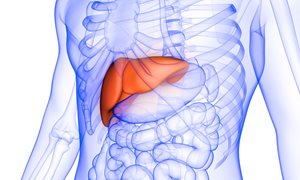
Erwin van Wijk, a researcher at Hearing and Genes, the national expertise center for hereditary hearing impairment at the Radboudumc, wants to contribute to making Usher syndrome treatable. The results so far are better than he had dared to hope. With a slightly different approach, the method he uses may also be of value in other hereditary disorders, such as DFNA9.
Van Wijk talks enthusiastically about the medical research projects he is involved in. He is conducting research into two hereditary disorders: Usher syndrome and DFNA9. The term 'genetic patch' often comes up in this context. "Indeed, that has been the major thread of my scientific career in recent years," he says. "In both studies, we have developed a genetic patch, but they do differ from each other."
Deafness and blindness
Usher syndrome is an inherited disorder that affects both hearing and vision and can eventually lead to complete deafness and blindness. In the Netherlands, it is estimated to occur in 600 to 1000 people. Van Wijk has been researching it since 2004. "Usher syndrome involves a small number of genes in which errors occur. These errors interfere with the production of functional proteins. The genetic patch ensures that the part of a gene in which the error occurs, called an exon, is taped off and is not recognized. The corresponding exon with the genetic error no longer enters the code that is translated into protein. The result is that a somewhat shortened protein is made, where the big question is whether that protein is functional enough to allow the eye and ear to function relatively normally. That's what the research is all about."
Genetic patch
Currently, the efficacy of the first genetic patch for Usher syndrome type 2a is being tested in patients. This patch has been developed specifically for exon 13 of the USH2A gene. This is where the error lies for some of the patients with Usher syndrome type 2a. "So with this research we cannot help all Usher patients. But if we can develop an effective treatment for this group, we are still talking about about about 16,000 people worldwide."
Stopping deterioration
Van Wijk deliberately speaks of "preserving" eye and ear function. His research around Usher syndrome, which is unique in the world, initially aimed to stop the deterioration of the progressive disease, not to provide improvement. But the results of the second phase of the clinical trial, which became public last year, were better than he had dared hope. "It turned out that there was even a slight improvement in vision, even in people in whom the disease was already at an advanced stage. That was a very nice finding that we had not expected."
Recently, the third phase of the clinical trial began, in which the study is conducted among a larger group of patients. The results will not be known until three years from now. "Hopefully all the data will hold up and then the drug will be on the market."
Timely intervention in DFNA9
Meanwhile, Van Wijk and his colleagues have also been working for about four years on a genetic patch for the special hereditary disease DFNA9. In this disease, people suddenly become very hard of hearing from around the age of 35 and also have to contend with serious problems with their balance. "It is a syndrome resulting from an error in the DNA that occurs almost exclusively in the Netherlands and Belgium. The interesting thing about the disease is that you can still intervene before people develop the first symptoms and therefore possibly prevent the problems from manifesting themselves."
The research on DFNA9 is much more preliminary than that on Usher syndrome. The so-called proof of concept has been completed, a patent has been obtained and two large research grants were recently secured to further develop the promising findings.
Clumping together
The genetic patch is different, in part because DFNA9 is dominant hereditary rather than recessively heritable, like Usher syndrome, Van Wijk explains. "There is an error in the COCH gene in DFNA9. After translation, this error leads to a clumping of the cochline protein that precipitates in the inner ear. We are trying to use the genetic patch specifically to make the mutated copy of the gene break down so that no proteins are made from it." So it's a different mechanism than the one Van Wijk uses in Usher syndrome, but the knowledge gained comes in handy. "What we learned about developing an effective genetic patch we used again, even though the patches work in a different way."
Other disease states
The knowledge now gained may now be applicable to other diseases and conditions. "We thought that the size of the DFNA9 patient population was unique, because hereditary hearing impairment is so heterogeneous. But now we have stumbled upon another form of dominant inherited hearing impairment: DFNA21. This involves finding a specific genetic error in the RIPOR2 gene that is estimated to occur thousands of times in Northwestern Europe. All as a result of one and the same genetic mutation. This is very special. The underlying disease mechanism is about the same as in DFNA9, so we might be able to repeat that trick in part. That could certainly apply to other disease states with a similar underlying disease mechanism that may not even be related to deafness or blindness. This approach has great potential."
Still many possibilities
Van Wijk's research group is therefore busy. "With the research grants we have received, we can put a lot of energy into the DFNA9 research in the coming years. In Usher syndrome, we are going to see if we can expand it. We are now looking at whether our method with the genetic patch can also be used for other types of Usher syndrome, such as for type 2c, among others. Together with American researchers, we are conducting research into type 1f. In this way we are contributing to the wonderful mission of the Usher Syndrome Foundation to make the disease treatable by 2025. We are also looking at other methods, such as deleting exons using the CRISPR-Cas system and developing reduced versions of Usher genes: minigenes. Yes, we still have more than enough to do."
Lights on green
Through a confluence of circumstances, Van Wijk once rolled into Usher research. "It came across my path fairly by chance. I find it very fascinating and beautiful, especially because you are involved in the research from start to finish. From discovering the gene to, hopefully, developing a therapy with which we can give patients a positive outlook. Our own data and the results of the trials look positive. We can never look into the future and anything can still go wrong, but for now all the lights are green. That gives a lot of energy."
Source: Lifeport (in Dutch)
Also read (in Dutch) the story of Ivonne (55) with Usher syndrome: 'Good care can yield a lot'.
-
Want to know more about these subjects? Click on the buttons below for more news.
More information
Pieter Lomans

persvoorlichter
Related news items

Liver tumors irradiated from inside can be followed live from outside
17 February 2022 A Dutch research team from Radboud University Medical Center has visualized the injection of radioactive microspheres during treatment of a patient with liver tumors ‘live on screen’. go to page
Micro-Cosmos helps patient unwind during hospitalization
10 February 2022 Nijmegen-based Micro-Cosmos is a start-up that makes retractable hoods to speed up the recovery of hospitalized patients. go to page
LUMO Labs and Oost NL invest in Aiosyn Investment accelerates development of artificial intelligence platform to improve diagnostics
7 February 2022 Aiosyn, a spin-off from Radboudumc, has received an investment from LUMO Labs. Oost NL is a co-investor. go to page
Improved AI will boost cancer research and cancer care Geert Litjens receives ERC Starting Grant
13 January 2022 Geert Litjens from Radboud university medical center has received a European Research Council (ERC) Starting Grant. go to page
Understanding fluctuation variation in cognitive abilities may provide insight into lifelong learning Rogier Kievit recieves ERC Starting Grant
13 January 2022 Rogier Kievit from Radboud university medical center has received a European Research Council (ERC) Starting Grant. go to page
